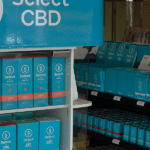On May 5, 2017, the State of California issued regulations for allowable limits of pesticides, solvents, and heavy metals in cannabis products. The proposed regulations include a period for public comments regarding guidelines for cannabis testing, which ends June 20th. CannaCraft, Inc., a Santa Rosa-based medical marijuana company, asked Project CBD research associate Adrian Devitt-Lee to prepare a detailed critique of California’s proposed testing requirements and to suggest ways to improve these regulations.
Well-regulated testing requirements are essential for the legal cannabis industry and the community that it serves. This is a summary of Project CBD’s criticisms regarding the proposed regulations and our recommendations for amending them. The full report, which has been submitted by CannaCraft to California officials, can be found here.
Summary
The following is a summary of Project CBD’s concerns with the State of California’s proposed regulations for cannabis testing regarding solvents (§5310), pesticides (§5313), and heavy metals (§5328), and recommendations for amending them. The primary goal of this statement is to describe the methodological and technical errors in the Bureau of Marijuana Control’s Initial Statement of Reasons, and to provide corrections and revisions to these errors [1, 2]. These regulations can and should be adjusted as more toxicological data is made available. We feel that much safety information is lacking, particularly with respect to vaporizing and smoking pesticides. We believe the following recommendations will benefit patients, recreational users, and people working in the industry.
Solvents
California’s proposed regulations for solvents are problematic because:
- The safety data from California Department of Industrial Relations’ California Division of Occupational Safety and Health (Cal/OSHA) and from the National Institute for Occupational Safety and Health (NIOSH) have been misinterpreted.
- At times, data referenced in the State’s document have been incorrectly transcribed from Cal/OSHA and the U.S. Pharmacopeia (USP).
- §5310 allows for the use of highly dangerous solvents, including benzene, which are not necessary for cannabis manufacturing and should not be allowed under any circumstances.
We recommend the following amendments to the solvent regulations:
- In Table 1 we have proposed revised action limits for solvents in both inhaled and ingested cannabis products, based primarily on Cal/OSHA’s short-term exposure limits (STEL) and the USP’s pharmaceutical safety guidelines.
- Because cannabis extracts can be safely made with Class 3 solvents like ethanol and butane, we recommend banning the use of Class 1 solvents as unnecessary and unsafe.
- We further recommend that regulators work with product-makers to determine if Class 2 solvents are necessary for extracting cannabinoids. If not, they should be banned for use in manufacturing extracts.
Pesticides
California’s proposed regulations for pesticides are problematic because:
- No references are given from which the proposed limits on pesticides in ingested products were determined.
- In §5313 it is assumed that individuals ingest up to 10% of their body weight in edibles each day. This is not only absurd, but it contradicts the assumption in §5310 that people ingest no more than 10 grams per day.
- Limits on pesticides in smoked products are ultimately based on the assumption that 0.1 ppm of any pesticide is safer than cigarette smoke. Setting safety limits based on the safety of cigarettes is nonsensical. Tobacco’s poor regulatory standards should not be used as a model for the cannabis industry.
- The limits of detection (LODs) of Category 1 pesticides on cannabis products have not been validated.
- The safety of ingested pesticides are evaluated based on the reference dose (RfD). The acceptable daily intake (ADI) is a more appropriate measure, as it accounts for chronic ingestion (e.g. food or medicine) whereas the RfD does not. We recommend the following amendments to the pesticide regulations:
- Pesticides should be separated into three categories, as shown in Table 3. Category 3 pesticides are allowed for use on cannabis, will be tested in each batch, and the action limits are set based on health or environmental concerns. Category 2 pesticides are banned for use on cannabis but are common. Every batch will be tested for Category 2 pesticides and the action limits are set at the pesticides’ limits of detection. Category 1 pesticides are banned for use on cannabis, but are uncommon and will not be tested in every batch.
- Action limits for Category 1/2 pesticides should be set at the limit of detection (LOD) for the given pesticides. Regulators should work with labs in California to determine current LODs for different pesticides in different cannabis products, including concentrates, flower, and edibles.
- The expected daily consumption of edibles should be set to a reasonable value, such as 10 g or 250 mg/kg, in the calculation of action limits for ingested products.
- In Table 2 we have proposed action limits for pesticides in ingested cannabis products, based on the ADIs tabulated by the European Food Safety Administration (EFSA) and the World Health Organization (WHO).
- Regulators should determine a standard method for estimating safe levels of acutely inhaled pesticides based on oral safety data by working with safety organizations and toxicologists.
Other Regulations
Certain changes to the lab regulations are dependent on changes to manufacturing and growing regulations. To be consistent with the recommendations herein, we recommend that:
- The manufacturing regulations ban the use of certain solvents in cannabis manufacturing, including all Class 1 solvents.
- The growing regulations include a stipulation allowing on-site testing for heavy metals.
- If these recommendations are taken, then testing for metals and Category 1 pesticides will not be required on every batch, as stipulated under the current proposal. Testing grow sites should be sufficient to ensure the absence of heavy metals. Similarly, systematic or random product testing for banned pesticides would be sufficient to ensure the absence of Category 1 pesticides. This would significantly reduce the cost of testing.
Adrian Devitt-Lee is a research scientist and longtime Project CBD contributor. © Copyright, Project CBD. May not be reprinted without permission.







